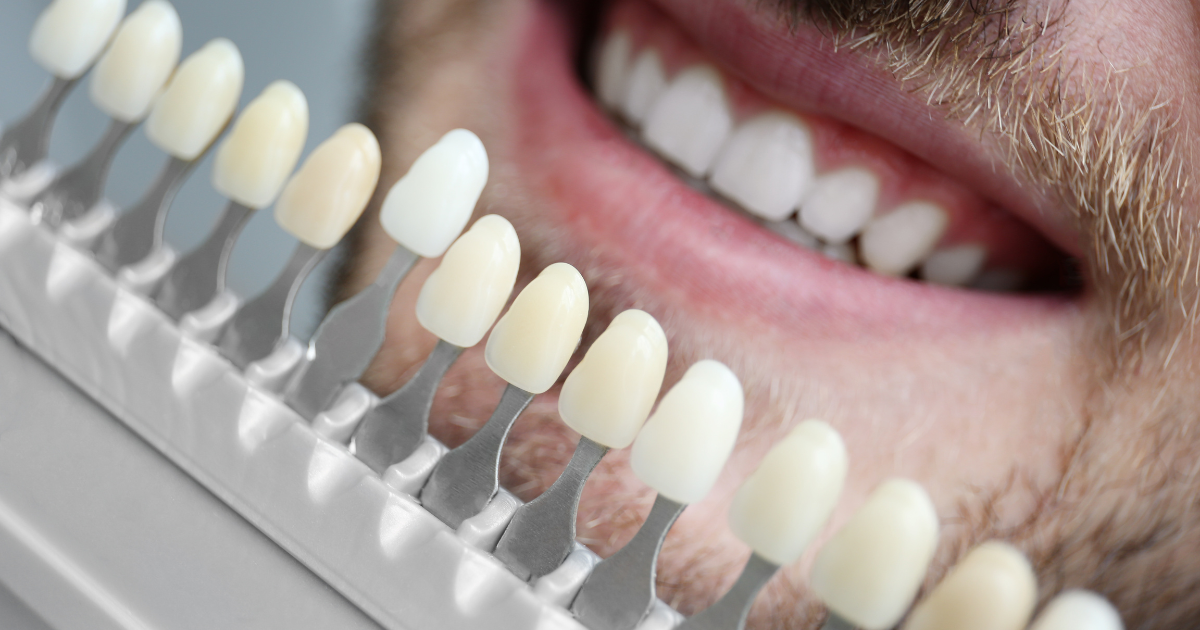Can You Get Veneer Teeth if You Have Gum Disease?

You dream of a perfect smile, but your gums tell a different story. Swollen, bleeding or receding gums can make you wonder—can you still get veneer teeth? Many people facing gum issues worry about their options, especially when they want a flawless smile without undergoing extensive dental treatments. The good news? There is hope, but it's not always a simple yes or no.
Let's break it down. What happens if you have gum disease? Can veneers still be an option? And most importantly, what steps should you take before getting them? This guide will answer these questions and help you understand how to get the smile you've always wanted—even with a history of gum problems.
Understanding Veneers and Their Purpose
What Are Veneers?
Veneers are thin, custom-made shells that cover the front surface of your teeth. They enhance appearance, hiding stains, chips, gaps, and minor misalignments. Made from porcelain or composite resin, they provide a long-lasting solution for a picture-perfect smile.
How Veneers Work on Teeth
Dentists bond veneers directly to the tooth's surface after slightly reshaping the enamel. Once in place, they mimic the natural look of real teeth, making them a popular choice among those who want a dazzling smile without braces or extensive dental work.
Gum Disease: The Silent Threat to Your Smile
What is Gum Disease?
Gum disease, or periodontal disease, is an infection of the tissues surrounding your teeth. It starts as gingivitis—red, swollen gums that bleed easily. If left untreated, it can progress into periodontitis, leading to gum recession, bone loss, and, eventually, tooth loss.
Signs You Might Have Gum Disease
- Bleeding while brushing or flossing
- Persistent bad breath
- Swollen or tender gums
- Loose teeth or shifting bite
- Receding gums, making teeth look longer than usual
If you notice any of these symptoms, a visit to the dentist is crucial before considering veneers.
Can You Get Veneers If You Have Gum Disease?
Why Healthy Gums Matter for Veneers
Gums play a key role in the success of veneers. If they're inflamed, receding, or infected, they won't provide a stable foundation for the veneers. This can lead to poor fitting, discomfort, and even veneer failure.
Mild Gum Disease vs. Severe Gum Disease
- Mild cases (gingivitis): If caught early, gingivitis can be reversed with good oral hygiene and professional cleanings. Once the gums heal, veneers may still be an option.
- Advanced cases (periodontitis): Severe gum disease causes gum recession and bone loss, making veneers a risky choice. In such cases, treating the underlying problem must come first.
The Steps to Take Before Getting Veneers
1. Get a Thorough Dental Examination
Before committing to veneers, a dentist will check the health of your gums, teeth, and bone structure. X-rays and gum assessments help determine whether your gums can support veneers.
2. Treat Gum Disease First
If gum disease is present, treatment should be your top priority. Here's what it may involve:
- Deep cleaning (scaling and root planing) – Removes bacteria and tartar from below the gumline.
- Medications – Antibiotics or antimicrobial rinses to reduce infection.
- Surgical options – In advanced cases, gum grafts or flap surgery may be needed.
3. Allow Gums to Heal
Even after treatment, gums need time to heal. Rushing into veneers too soon can lead to complications. Your dentist will monitor your progress and let you know when it's safe to proceed.
4. Consider Alternatives If Needed
If gum disease has caused severe damage, veneers might not be the best choice. Alternatives include:
- Dental crowns – Cover the entire tooth, offering better protection.
- Gum grafting – Restores lost gum tissue for improved aesthetics and function.
- Orthodontic treatment – If gum recession is caused by bite issues, straightening teeth might be necessary first.
Are Veneers Safe for People Who Have Had Gum Disease?
When Are Veneers a Good Option?
If gum disease has been successfully treated and the gums are healthy, veneers can still be an option. However, regular check-ups and good oral hygiene are essential to maintain results.
When Veneers Might Not Be Ideal
If the gum tissue is too weak or bone loss has affected tooth stability, veneers might not last long. In these cases, dentists may recommend a different cosmetic solution.
Maintaining Healthy Gums After Getting Veneers
Daily Habits for Gum and Veneer Care
- Brush twice a day with a soft-bristled toothbrush.
- Floss daily to remove plaque and food particles between teeth.
- Use an alcohol-free mouthwash to keep bacteria in check.
- Avoid smoking, which can increase the risk of gum infections.
- Visit the dentist regularly for professional cleanings and gum health checks.
Signs of Gum Trouble to Watch For
Even after veneers, gum problems can return. Keep an eye out for redness, swelling, or gum recession. If you notice any issues, consult your dentist immediately.
The Role of Smile Design Boutique in Cosmetic Dentistry
For those in Geneva looking for expert cosmetic dental care, Smile Design Boutique Geneva offers advanced solutions tailored to individual needs. Their team prioritizes gum health before cosmetic treatments, ensuring that veneers are a long-lasting and safe option. With state-of-the-art techniques and personalized care, they help patients achieve the smiles they've always wanted.
Gum disease doesn't have to mean the end of your dream smile. While veneers might not be an immediate option if your gums are unhealthy, proper treatment and care can make them possible in the future. The key is to act early, follow a good oral hygiene routine, and work with a skilled dentist to ensure the best results.
Would you like to take the first step towards a healthier smile? A consultation with an expert can help you understand your options and create a plan that works for you.
Frequently Asked Questions (FAQs)
1. Can I get veneers if my gums bleed when I brush?
No, bleeding gums may indicate gum disease, which must be treated before veneers can be placed. A dentist can assess your condition and recommend the best course of action.
2. How long after treating gum disease can I get veneers?
It depends on how severe the gum disease was. Mild cases may take weeks, while advanced cases can require months of healing and monitoring before veneers are considered.
3. Do veneers protect against gum disease?
No, veneers cover only the front surface of teeth. They do not prevent gum disease. Proper oral hygiene and regular dental visits are crucial for maintaining gum health.
4. What happens if my gums recede after getting veneers?
If gums recede, the edges of veneers may become visible, affecting the smile's appearance. In some cases, gum grafting or other treatments may be needed to restore aesthetics.
5. Can veneers cause gum disease?
Poorly fitted veneers or neglecting oral hygiene can increase the risk of gum disease. Working with an experienced dentist and maintaining a good dental care routine can prevent this.
- Educação
- Course
- Books
- Drawing
- Seção
- Film
- Fitness
- Food
- Jogos
- Gardening
- Health
- Início
- Literature
- Music
- Networking
- Outro
- Programming
- Religion
- Shopping
- Sports
- Curriculm
- Wellness


